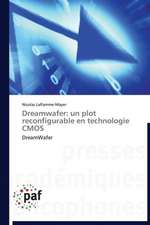Thermal Computations for Electronics: Conductive, Radiative, and Convective Air Cooling
Autor Gordon N. Ellisonen Limba Engleză Hardback – 12 mai 2020
The flavor and organization of the first edition have been retained, whereby the reader is guided through the analysis process for systems and then components. Important new material has been added regarding altitude effects on forced and buoyancy driven airflow and heat transfer. The first 20% of the book is devoted to the prediction of airflow and well-mixed air temperatures in systems, circuit board channels, and heat sinks, followed by convective (PCB-mounted components included), radiative, and conductive heat transfer and the resultant temperatures in electronic equipment. Detailed application examples illustrate a variety of problems.
Downloads (from the CRC website) include: MathcadTM text examples, exercise solutions (adopting professors only) plus PDF lecture aids (professors only), and a tutorial (Chapter 14) using free FEA software to solve a thermal spreading problem.
This book is a valuable professional resource for self-study and is ideal for use in a course on electronics cooling. It is well-suited for a first course in heat transfer where applications are as important as theory.
| Toate formatele și edițiile | Preț | Express |
|---|---|---|
| Paperback (1) | 335.31 lei 6-8 săpt. | |
| CRC Press – 13 iun 2022 | 335.31 lei 6-8 săpt. | |
| Hardback (1) | 1124.35 lei 6-8 săpt. | |
| CRC Press – 12 mai 2020 | 1124.35 lei 6-8 săpt. |
Preț: 1124.35 lei
Preț vechi: 1371.15 lei
-18% Nou
Puncte Express: 1687
Preț estimativ în valută:
215.14€ • 225.23$ • 178.02£
215.14€ • 225.23$ • 178.02£
Carte tipărită la comandă
Livrare economică 05-19 aprilie
Preluare comenzi: 021 569.72.76
Specificații
ISBN-13: 9780367465315
ISBN-10: 0367465310
Pagini: 404
Ilustrații: 281
Dimensiuni: 178 x 254 x 24 mm
Greutate: 0.89 kg
Ediția:2nd edition
Editura: CRC Press
Colecția CRC Press
ISBN-10: 0367465310
Pagini: 404
Ilustrații: 281
Dimensiuni: 178 x 254 x 24 mm
Greutate: 0.89 kg
Ediția:2nd edition
Editura: CRC Press
Colecția CRC Press
Public țintă
Professional Practice & DevelopmentCuprins
Introduction. Thermodynamics of airflow. Airflow I: Forced flow in systems. Airflow II: Forced flow in ducts, extrusions, and pin fin arrays. Airflow III: Buoyancy driven draft. Forced convective heat transfer I: Components. Forced convective heat transfer II: Ducts, extrusions, and pin fin arrays. Natural convection heat transfer I: Plates. Natural convection heat transfer II: Heat sinks. Thermal radiation heat transfer. Conduction I: Basics. Conduction II: Spreading resistance. Additional mathematical methods. Appendix i: Physical properties of dry air at atmospheric pressure. Appendix ii: Radiation emissivity at room temperature. Appendix iii: Thermal conductivity of some common electronic packaging materials. Appendix iv: Some properties of Bessel functions. Appendix v: Some properties of the Dirac delta function. Appendix vi: Fourier coefficients for a rectangular source. Appendix vii: Derivation of the Green’s function properties for the spreading problem of a rectangular source and substrate - method A. Appendix viii: Derivation of the Green’s function properties for the spreading problem of a rectangular source and substrate - method B. Appendix ix: Proof of reciprocity for the steady-state Green’s function. Proof of reciprocity for the three-dimensional, time-dependent Green’s function. Appendix x: Finned surface to flat plate h conversion. Appendix xi: Some conversion factors. Appendix xii: Altitude effects for fan driven airflow and forced convection cooled enclosures.Appendix xiii: Altitude effects for buoyancy driven airflow and natural convection cooled enclosures. Bibliography. Index.
Notă biografică
Gordon N. Ellison has a BA in Physics from the University of California at Los Angeles (UCLA) and an MA in Physics from the University of Southern California (USC). His career in thermal engineering includes twelve years as a Technical Specialist at NCR and eighteen years at Tektronix, Inc., retiring from the latter as a Tektronix Fellow. Over the last fifteen years Ellison has been an independent consultant and has also taught the course, Thermal Analysis for Electronics, at Portland State University, Oregon. He has also designed and written several thermal analysis computer codes.
Recenzii
I’ve been amazed with the content of this book, which goes from the basics and teach you the basics principle of heat and thermal, but also give you very practical examples, which really give you a sense of how this works.
I hope that this book can be really useful, especially if you’re interested in looking at cooling. And there are some great knowledge too, to gain from this book, especially if you want to understand not only how to simulate that, but also how to understand the physics behind it in the more natural manner, lets say without necessarily having to compute everything on the computer first.
You can use thermal networks theory, or you can use various things like that, that can help you to get an idea of the temperature into your system without having to compute everything first. And, I think this really helps for engineers who works with thermal.
-Cyprien Rusu, FEA Expert, MIDAS IT
I hope that this book can be really useful, especially if you’re interested in looking at cooling. And there are some great knowledge too, to gain from this book, especially if you want to understand not only how to simulate that, but also how to understand the physics behind it in the more natural manner, lets say without necessarily having to compute everything on the computer first.
You can use thermal networks theory, or you can use various things like that, that can help you to get an idea of the temperature into your system without having to compute everything first. And, I think this really helps for engineers who works with thermal.
-Cyprien Rusu, FEA Expert, MIDAS IT
Descriere
The flavor and organization of the first edition has been retained whereby the reader is guided through the analysis process for systems and then components. Important new material has been added regarding altitude effects on forced and buoyancy driven airflow and heat transfer.

























